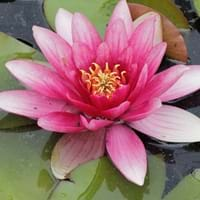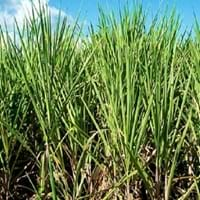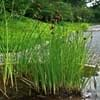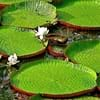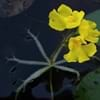Life Span
Perennial
Perennial
Origin
World/Pandemic
Southeastern Asia, Melanesia, Micronesia
Types
Not Available
Not Available
Number of Varieties
Not Available
Habitat
Ponds
agricultural areas, Wet lands
USDA Hardiness Zone
4-9
10-15
AHS Heat Zone
12-1
12 - 9
Sunset Zone
21,22
H1, H2, 8, 9, 20, 21, 22, 23, 24
Habit
Not Available
Clump-Forming
Minimum Height
Not Available
Flower Color
White, Yellow, Red, Orange, Pink, Magenta, Fuchsia, Coral, Peach, Blue Violet, Ivory
White hair and some brown spots on margins and at tips
Flower Color Modifier
Bicolor
Bicolor
Fruit Color
Green
Not Available
Leaf Color in Spring
Green, Dark Green
Green
Leaf Color in Summer
Green, Dark Green
Light Green
Leaf Color in Fall
Green, Dark Green
Green
Leaf Color in Winter
Not Available
Green
Leaf Shape
Round
Acicular
Plant Season
Summer, Fall
Summer, Fall
Sunlight
Full Sun, Partial Sun
Full Sun
Growth Rate
Fast
Very Fast
Type of Soil
Clay, Loam, Sand
Clay, Loam, Sand
The pH of Soil
Neutral
Acidic, Neutral, Alkaline
Soil Drainage
Poorly Drained
Average
Bloom Time
Indeterminate
Early Summer, Summer, Late Summer, Early Fall
Tolerances
Wet Site
Wet Site, Drought
Where to Plant?
In Water
Ground
How to Plant?
Stem Planting
Seedlings, Stem Cutting
Plant Maintenance
Medium
High
Watering Requirements
Plant grows in water
Water Deeply
In Summer
Lots of watering
Lots of watering
In Spring
Moderate
Moderate
In Winter
Average Water
Average Water
Soil pH
Neutral
Acidic, Neutral, Alkaline
Soil Type
Clay, Loam, Sand
Clay, Loam, Sand
Soil Drainage Capacity
Poorly Drained
Average
Sun Exposure
Full Sun, Partial Sun
Full Sun
Pruning
Remove damaged leaves, Remove dead branches, Remove dead leaves
Prune ocassionally, Remove dead branches, Remove Ferns
Fertilizers
All-Purpose Liquid Fertilizer
Equal amount of N,P,K, fertilize in growing season
Pests and Diseases
Not Available
Beetles, Fusarium root rot, Head smut
Plant Tolerance
Drought
Heat Tolerance, Shade areas
Flower Petal Number
Single
Single
Foliage Texture
Coarse
Coarse
Foliage Sheen
Glossy
Matte
Self-Sowing
Not Available
Yes
Attracts
Fishes
Butterflies, Rats, Squirrels
Allergy
Not Available
Diabetes, Sleepiness
Aesthetic Uses
Showy Purposes, Water gardening
Not Used For Aesthetic Purpose
Beauty Benefits
Not Available
Maintains teeth healthy, Making cosmetics
Environmental Uses
Air purification
Food for animals, Food for birds
Medicinal Uses
Not Available
Aging, Antidepressant, Aphrodisiac, Appetite enhancer, Diuretic, Fatigue, Muscle Pain, Nutrients
Part of Plant Used
Leaves, Root, Stem
Leaf Stalks, Leaves, Stem
Other Uses
Can be made into a herbal tea, Culinary use, Used as Ornamental plant, Used in herbal medicines
Animal Feed, Biomass for fuel, Can be made into a herbal tea, Food for animals, Sometimes used for making wine
Used As Indoor Plant
Yes
No
Used As Outdoor Plant
Yes
Yes
Garden Design
Water Gardens
Dried Flower/Everlasting, Edible, Feature Plant, Tropical
Botanical Name
NYMPHAEA 'Charles de Meurville'
SACCHARUM officinarum
Common Name
Charles de Meurville Waterlily, Hardy Daylily
Sugarcane
In Hindi
Hardy Daylily
गन्ना
In German
Hardy Daylily
Saccharum
In French
Hardy Daylily
Canne à sucre
In Spanish
Hardy Daylily
Saccharum
In Greek
Hardy Daylily
Saccharum
In Portuguese
Hardy Daylily
Cana-de-açúcar
In Polish
Hardy Daylily
Saccharum
In Latin
Hardy Daylily
Saccharum
Phylum
Magnoliophyta
Magnoliophyta
Class
Magnoliopsida
Liliopsida
Order
Nymphaeales
Cyperales
Family
Nymphaeaceae
Poaceae
Clade
Angiosperms
Commelinids, Monocots
Tribe
Not Available
Andropogoneae
Subfamily
Not Available
Panicoideae
Difference Between Hardy Daylily and Sugarcane
If you are confused whether Hardy Daylily or Sugarcane are same, here are some features about those plants to help you choose better. Many people think that these two plants have the same characteristics, but one can see Hardy Daylily and Sugarcane Information and learn more about it. Fertilizers required for proper growth of Hardy Daylily are All-Purpose Liquid Fertilizer, whereas for Sugarcane fertilizers required are Equal amount of N,P,K and fertilize in growing season. Hence, one should know the basic difference between Hardy Daylily and Sugarcane if you are planning to have them in your garden to enhance its beauty.
<
Flowering PlantsImportance of Hardy Daylily and Sugarcane
Want to have the most appropriate plant for your garden? You might want to know the importance of Hardy Daylily and Sugarcane. Basically, these two plants vary in many aspects. Compare Hardy Daylily and Sugarcane as they differ in many characteristics such as their life, care, benefits, facts, etc. Every gardener must at least have the slightest clue about the plants he wants to plant in his garden. Compare their benefits, which differ in many ways like facts and uses. The medicinal use of Hardy Daylily is Not Available whereas of Sugarcane is Aging, Antidepressant, Aphrodisiac, Appetite enhancer, Diuretic, Fatigue, Muscle Pain and Nutrients. Hardy Daylily has beauty benefits as follows: Not Available while Sugarcane has beauty benefits as follows: Not Available.
Compare Facts of Hardy Daylily vs Sugarcane
How to choose the best garden plant for your garden depending upon its facts? Here garden plant comparison will help you to solve this query. Compare the facts of Hardy Daylily vs Sugarcane and know which one to choose. As garden plants have benefits and other uses, allergy is also a major drawback of plants for some people. Allergic reactions of Hardy Daylily are Not Available whereas of Sugarcane have Diabetes and Sleepiness respectively. Having a fruit bearing plant in your garden can be a plus point of your garden. Hardy Daylily has no showy fruits and Sugarcane has showy fruits. Also Hardy Daylily is not flowering and Sugarcane is not flowering . You can compare Hardy Daylily and Sugarcane facts and facts of other plants too.
